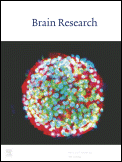
“Characterized by chronic widespread pain, generalized hyperalgesia, and psychological stress fibromyalgia (FM) is difficult to diagnose and lacks effective treatments.
The endocannabinoids – arachidonoylethanolamide (AEA), 2-arachidonoylglycerol (2-AG), and the related oleoylethanolamide (OEA), palmitoylethanolamide (PEA), and stearoylethanolamide (SEA) – are endogenous lipid mediators with analgesic and anti-inflammatory characteristics, in company with psychological modulating properties (e.g., stress and anxiety), and are included in a new emerging “ome”, the endocannabinoidome.
This case -control study compared the concentration differences of AEA, OEA, PEA, SEA, and 2-AG in 104 women with FM and 116 healthy controls (CON). All participants OEArated their pain, anxiety, depression, and current health status. The relationships between the lipid concentrations and the clinical assessments were investigated using powerful multivariate data analysis and traditional bivariate statistics. The concentrations of OEA, PEA, SEA, and 2-AG were significantly higher in FM than in CON; significance remained for OEA and SEA after controlling for BMI and age. 2-AG correlated positively with FM duration and BMI, and to some extent negatively with pain, anxiety, depression, and health status. In FM, AEA correlated positively with depression ratings.
The elevated circulating levels of endocannabinoidome lipids suggest that these lipids play a role in the complex pathophysiology of FM and might be signs of ongoing low-grade inflammation in FM. Although the investigated lipids are significantly altered in FM their biological roles are uncertain with respect to the clinical manifestations of FM. Thus, plasma lipids alone are not good biomarkers for FM.
PERSPECTIVE:
This study reports about elevated plasma levels of endocannabinoidome lipid mediators in FM. The lipids suitability to work as biomarkers for FM in the clinic were low, however their altered levels indicate that a metabolic asymmetry is ongoing in FM, which could serve as basis during explorative FM pain management.”
https://www.ncbi.nlm.nih.gov/pubmed/29885369
https://www.jpain.org/article/S1526-5900(18)30197-4/fulltext










